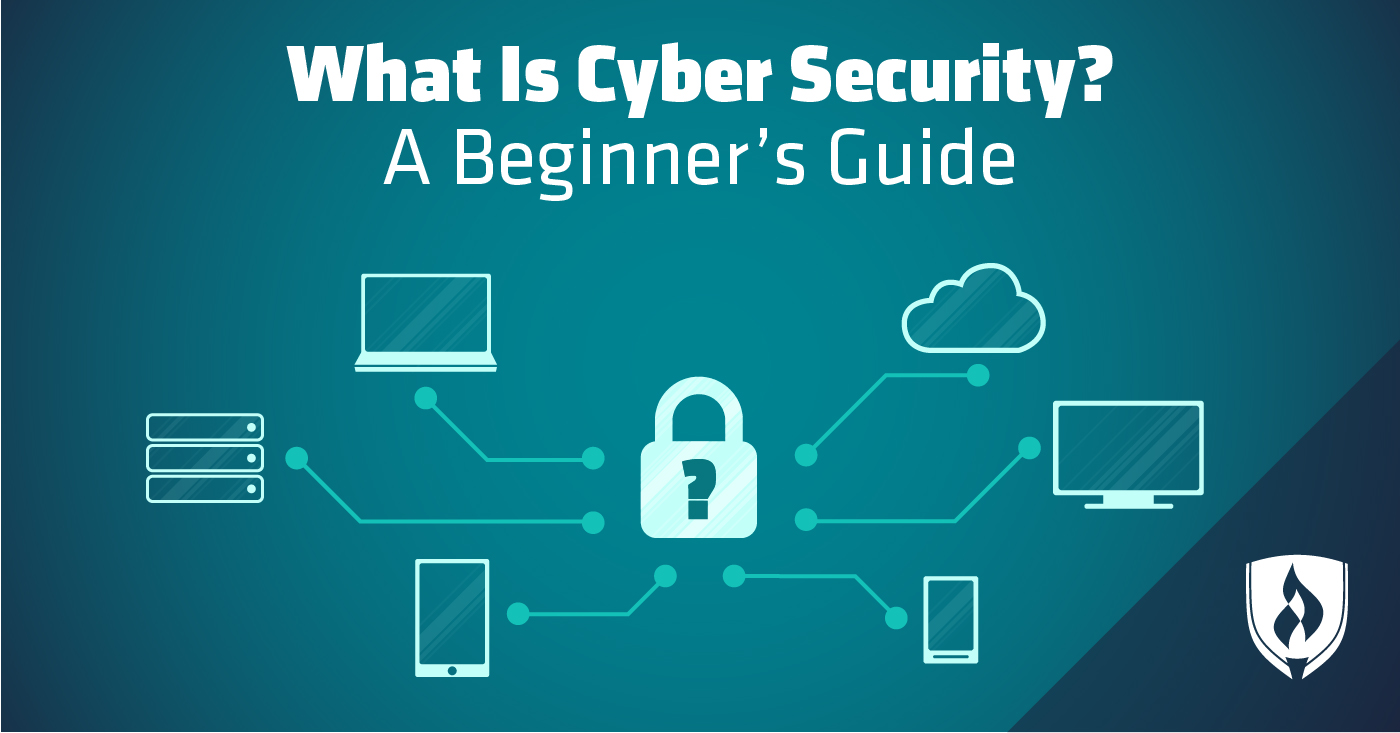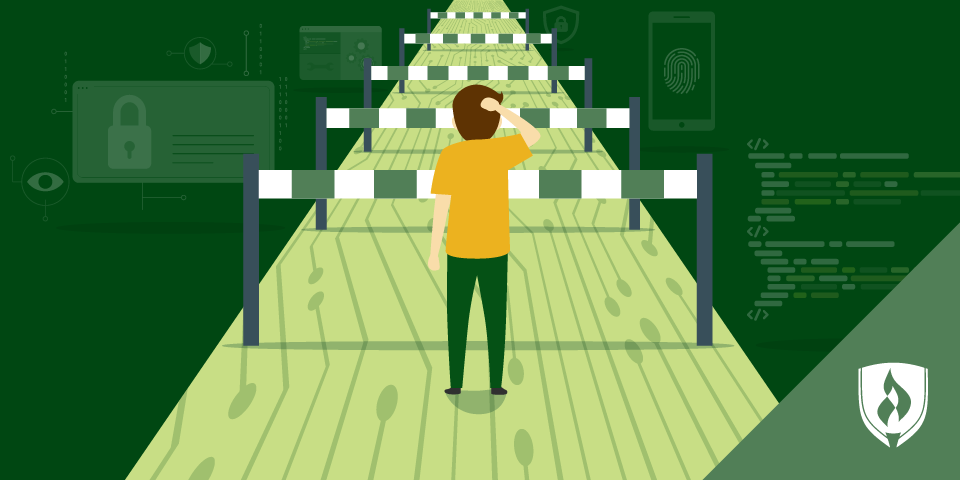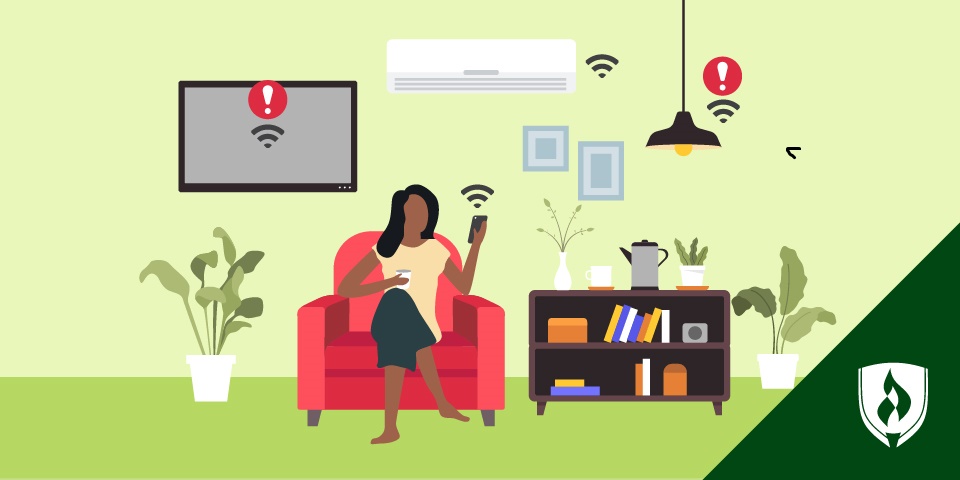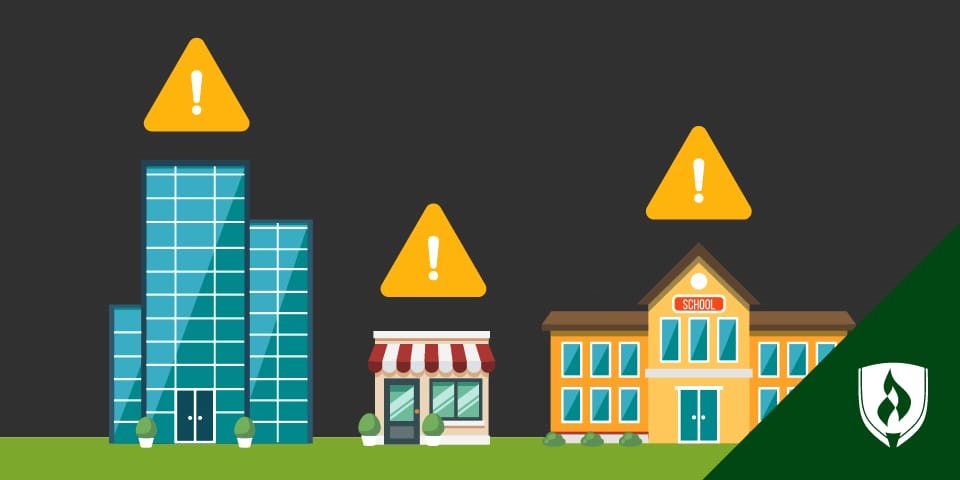
There’s a definite cool factor whenever one of your friends announces their tech-related job title. Among all the analysts, developers and programmers, one technology role never fails to catch your attention: cyber security.
You’d love to be able to proudly say that you’re part of a cyber security team—but you don’t actually know much about the job. Talking about cyber security conjures up images of international spies hacking government networks in a dark basement somewhere. You know that can’t be right ... can it?
Working in cyber security may not always be that dramatic, but it’s still an expanding career worth exploring. In fact, the Bureau of Labor Statistics (BLS) projects that employment of information security analysts will grow by 28 percent through 2026—and that’s just one of the job titles available in this career field.1
What is cyber security all about? We’re bringing you the full scoop on the world of cyber security, including the history of how this career came to be and what experts in the industry have to say about its future. If you're interested in pursuing a career in cyber security, don't forget to check out our article on "Cyber Security Certifications" to learn about the certifications that can help you get started in this field. Learn more about what a cyber security job description entails.
What is cyber security?
Cyber security is a subsection of the technology industry that focuses on protecting the safety of “computers, networks, electronic devices and digital information from cyberattacks,” says Zubair Alexander, founder, CEO and network security engineer at SeattlePro Enterprises.
Cyberattacks are serious business that can affect millions of people. “Electronic devices, networks and data are valuable assets for companies and individuals,” says Olga Sushko, privacy and security advocate at MacKeeper. “Cybercriminals may want to compromise these electronic systems and intercept data for financial gain, sabotage, espionage or even just for fun.”
No digital user is safe from cyberattacks. Hackers target everyone from large corporations to individual users—even the U.S. military! “The people in general, and the governments in particular are having a difficult time keeping up with all the technological changes,” Alexander says. “Nations are fighting cyberwars, rather than resorting to traditional warfare.”
Cyber security is the field that has developed in response to these attacks. These specialists are involved in a range of duties, from deploying specialized software to preventing cyberattacks to “trying to change the users’ mindsets towards conscious behavior online,” Sushko says.
One thing is for sure about this tech-driven career: The job duties of a cyber security specialist have been evolving since the very beginning of the field.
Cyber security history
You may be surprised to learn that the exploits and issues cyber security professionals deal with have been around in a basic form for decades. In the early 1970s, the experimental self-replicating “Creeper” virus made minor waves hopping from mainframe computers connected via ARPANET. The damage? Infected machines printing the message, “I’m the creeper, catch me if you can!” While that amounts to a minor annoyance by today’s standards, the solution for removing this pesky program is believed to have spawned the first anti-virus software. The significance of this may not have been fully appreciated at the time, but the value of keeping connected machines secure became much clearer as the use of the internet became more widespread.
“It wasn’t until the ‘90s when we started to experience viruses, such as ILOVEYOU and Melissa, which infected millions of computers around the world very quickly,” Alexander says.
As technology evolved, it became clear that laws and security measures were needed to protect users from hackers. Congress enacted the Computer Fraud and Abuse Act in 1986, marking the first law against computer-related crimes like data theft and unauthorized network use. Two years later, a student named Robert Tappan Morris became the first person convicted under this act after releasing code that by some estimates incapacitated 10 percent of the computers that were linked to the internet at the time.
The number of people using the internet—and the internet’s capabilities themselves—expanded rapidly over the next two decades. Web development tools and smartphones themselves became widely used, but many had security flaws that left users open to cyberattacks. Cyber security experts worked hard during this time to tame the Wild West of technology, scrambling to stay ahead of hackers as more and more devices connected to the online network.
The Washington Post reports that in 2010, a Pentagon advisory group called for “a more fundamental understanding of the science of cyber-security.”1 This understanding is what cyber security specialists seek to develop day in and day out as they work to prevent—and minimize the damage stemming from—cyberattacks.
Cyber security growth
Both the internet and users’ technology habits have changed dramatically since the early days of network connectivity, and the professionals working in cyber security need to stay on their toes to prevent cybercrimes.
“Tools used by both cybercriminals and security experts become more complex and automated,” Sushko says. “This is why it takes years of constant learning to become a skilled cyber security specialist.”
The stakes are high for the future of cyber security, and organizations across the nation are taking cyberattacks as a serious threat. “The cyber security landscape has expanded in response to the increase in cybercriminal activities,” Alexander says. “The private and public sectors, military and the intelligence agencies in the United States have invested heavily in cybersecurity services, personnel and equipment.”
Though no one knows exactly what the future holds for this vital field, new ways of looking at cyber security are on the horizon in the hopes of deterring criminal attacks. For example, Alexander believes the zero trust network security model—a strict approach to network design where the default level of connectivity for even internal network users is extremely limited—is the next step in countering hackers.
“Because these data breaches are so harmful to the general public and corporations, cybersecurity is literally changing the way computer networks and devices are to be protected from cyberattacks,” Alexander says.
Cyber security careers
In most cases, a team of cyber security professionals will work together to create a safer network for their organization. Here’s a brief look at some of the cyber security job titles you might encounter:
- Information security analysts take measures to protect their organization’s networks, such as firewalls, encryption programs and the latest cyber security trends. They watch for signs of a breach, investigate security problems and document damage caused by hackers, according to the BLS.2
- Data privacy officers are “responsible for data protection compliance with the relevant legislation,” Sushko says. “As privacy regulations constantly evolve and may contain stiff penalties for non-compliance, this role is gaining more and more attention on the job market.”
- Penetration testers are specialists who essentially role-play as intruders, using “authorized simulated attacks against their own networks, Web servers and applications to find security flaws that hackers may be able to exploit,” Alexander says. These professionals compile detailed reports of risk areas and may help draft proposals for how to address the issues they find.
Do you have a future in cyber security?
What is cyber security? No matter how you define this evolving technology career, there’s no denying that it’s an important role in our digital society.
Organizations big and small rely on cyber security professionals to keep users safe from cyberattacks. Find out if you have what it takes to work in this field by checking out our article “8 Signs You’re Wired for Working in a Cyber Security Career.”
Additional Relevant Articles:
1“A history of Internet security”, Washington Post, May 30, 2015. [accessed September 2019].
2Bureau of Labor Statistics, U.S. Department of Labor, Occupational Outlook Handbook, [accessed August, 2019] www.bls.gov/ooh/. Information represents national, averaged data for the occupations listed and includes workers at all levels of education and experience. Employment conditions in your area may vary.




